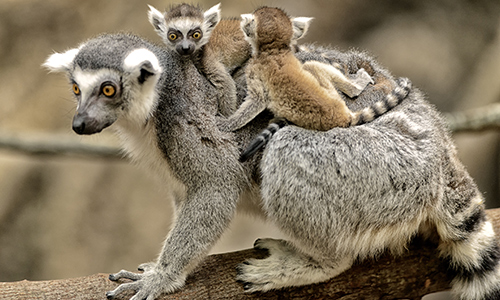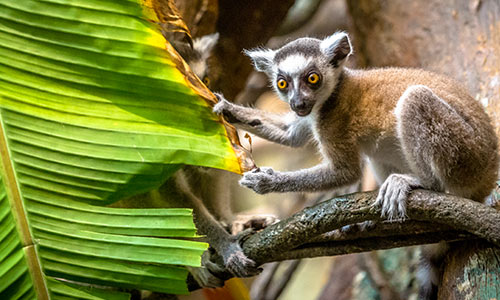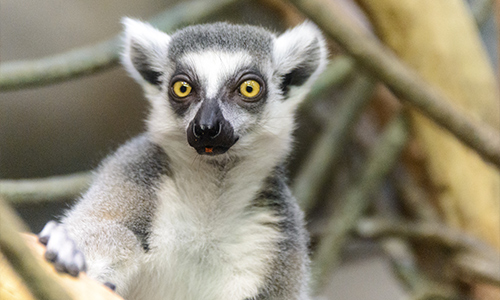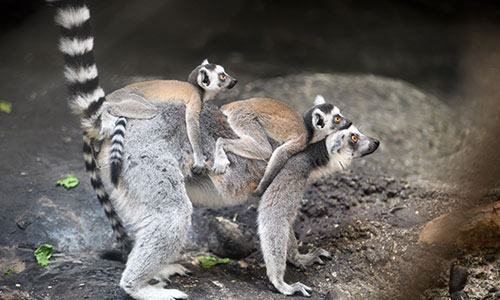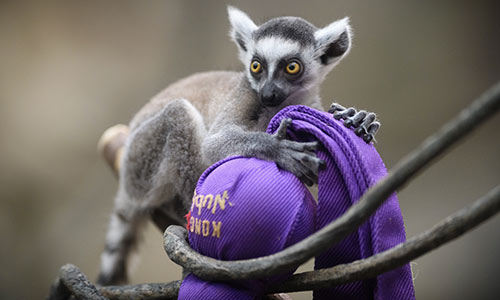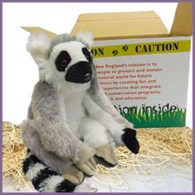Ring-Tailed Lemur
Lemur catta
About the Ring-Tailed Lemur

Geographic Range:
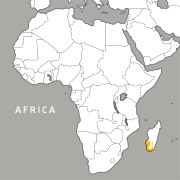
Class: Mammalia
Order: Primates
Family: Lemuridae
Genus: Lemur
Species: catta
The ring-tailed lemur is a cat-sized primate with a distinctive upright tail patterned with black-and-white rings. Its white face is equally distinctive, with triangular black markings around the eyes and a black nose. The lemur is a prosimian, meaning it's not a monkey or an ape, yet it's still a primate. The name lemur is a Latin word meaning "ghost" or "spirit of the dead," which was given because of the strange calls it uses to communicate potential danger to its group.
Committed to Conservation
Zoo New England participates in the ring-tailed lemur Species Survival Plan. By sharing research and knowledge, participating institutions work together to establish guidelines that best ensure the health of captive populations, and with success, the survival of endangered species.
Ring-tailed Lemur Facts
Appearance:
Lemurs are cat-sized, with gray or rosy brown backs. Their hind legs are lighter gray or brown, and they have white stomachs. Their faces are also white with triangular black markings around their eyes and black noses. Their long upright tails have a black and white ringed pattern.
Their feet have opposable digits, allowing lemurs to move nimbly through the trees, but their tails lack prehensile ability, which would allow them to grip trees like other primates. Lemurs lack trichromatic (three-color) vision.
Size:
Reach adult size of 5 to 8 pounds.
Body length of 15 to 18 inches.
Tail length of 22 to 25 inches.
No size difference between males and females.
Reproduction:
Females are in estrus for less than one day, and all females within a troop come into estrus within two weeks of each other. In the wild, mating begins in mid-April with infants born in August and September. They typically give birth to a single infant after a 4-5 month gestation period. Infant mortality is high, with 30 to 50 percent of newborns dying in the first year of their lives. Single infants are most common, but twins are a frequent sight in ring-tail troops when food is plentiful. They carry their young from birth to weaning at 4 to 5 months of age. Babies are first carried on their mother’s stomach, and after two weeks, they ride on their mother’s back. Lemurs are sexually mature at 2 or 3 years of age.
Median Life Expectancy:
15-16 years
Threats in Wild:
Ring-tailed lemurs are an endangered species. Habitat loss is a huge concern, as Madagascar is a hotspot for deforestation, overgrazing and burning wood for charcoal. The lemurs are also sometimes killed for food or captured to keep as pets.
Habitat/Range:
Ring-tailed lemurs are found only in the south and southwestern portions of the island of Madagascar. This species is able to live in a wide variety of habitats, including forests, lowlands and rock canyons. Ring-tailed lemurs are a popular sight for tourists and are easily found in protected reserves such as Isalo National Park, The Andohahela, Andringita, and Tsimanampetsotsa Nature Reserves, The Beza Mahafaly Special Reserve, and The Berenty Private Reserve. The attraction of tourists brings in valuable money for Madagascar.
Diet:
Ring-tailed lemurs are omnivorous, primarily eating fruit, leaves, bark, flowers, sap, insects and small vertebrates. Their diet varies depending on the season and ecosystem. At the Zoo, they’re fed primate biscuits, sweet potatoes, carrots, apples, insects and browse as enrichment.
Behavior:
Lemurs have a unique social structure—the adult females completely dominate the adult males. They’re cathemeral, meaning their activity is spread over several bursts, distributed over both day and night. They live in groups known as troops. Troops may include six to 30 animals, but average about 17. When they travel throughout their home range, lemurs keep their tails raised in the air, like flags, to keep group members together. They move quadrupedally (on all four feet) and spend about 50 percent more time on the ground than any other lemur species.
Ring-tailed lemurs are one of the most vocal primates. They have several different alarm calls with distinct meanings to alert members of their group to potential danger. Young may become prey to large birds, and to warn their offspring, parents will sound alarm calls at the raptors’ arrival.
Powerful scent glands on their wrists and chests are used to mark foraging routes. Males have a horny spur on each wrist gland that’s used to pierce tree branches before scent-marking them. They also use their unique odor as a communication tool and even as a weapon.
Role in their habitat:
Ring-tailed lemurs are prey to numerous predators including fossas, raptors and domestic dogs. They aid in seed dispersal and contribute to the structure of local plant communities.
Conservation:
Our lemurs are part of a captive breeding program to ensure that the species survives should it go extinct in the wild, as well as educates guests on their behavior and conservation concerns.
Fun Facts:
- The lemur is a prosimian, meaning it's not a monkey or an ape, yet it's still a primate.
- Their name comes from the Latin word “lemur”, meaning ghost or spirit of the dead, named because of their strange calls.
Thanks to a collaboration between Zoo New England, San Diego Zoo, and Boston Children’s Hospital, animal-oriented stories like this are broadcasting in every hospital patient room and waiting area on the San Diego Zoo Kids channel. Learn more.
You Can Find This Animal in the Tropical Forest
Zoodopt a Ring-tailed Lemur!
Zoodopts support the care and feeding of our animals, and with each purchase, we'll bring a little of the Zoo to you!
No Monkey Business!
The lemur is a prosimian, meaning it's not a monkey or an ape, yet it's still a primate.
You May Also Like
At Franklin Park Zoo:
At Stone Zoo:

